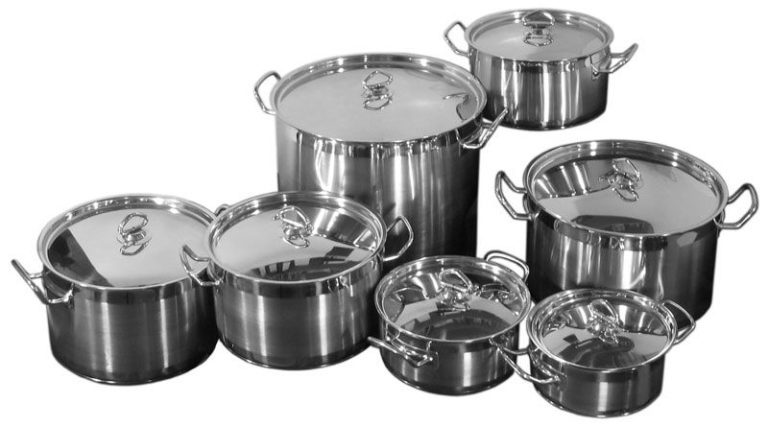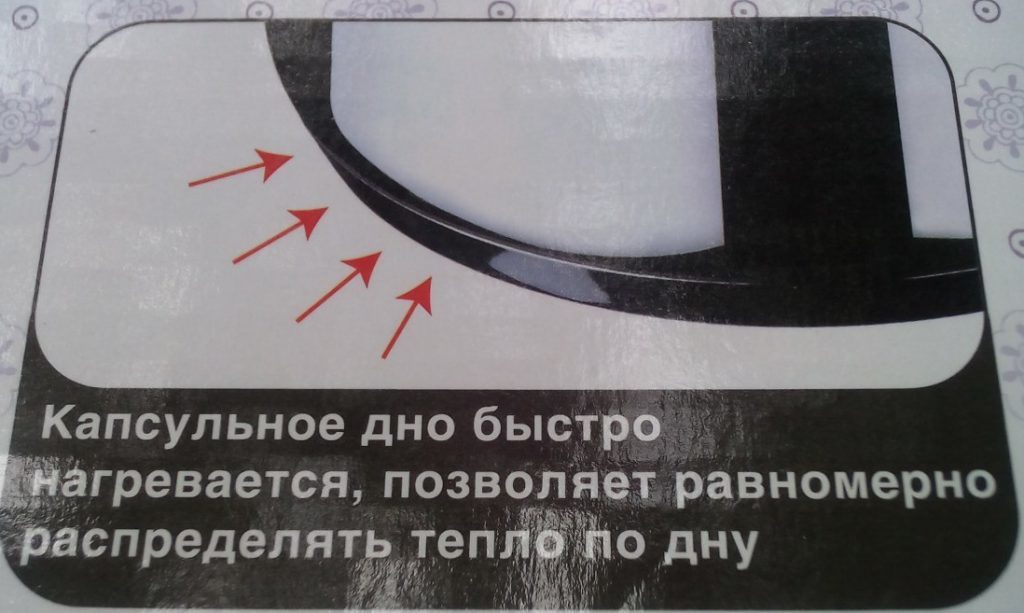Dishes are an integral attribute of any kitchen, because without it it is impossible to cook a single dish. But even with timely care, fat accumulates on it.
Plaque negatively affects not only the appearance of kitchen utensils. Due to the appearance of fat deposits, products begin to stick to the walls and bottom of the dishes. In addition, old pollution negatively affects the taste of the finished dish.
To avoid such situations, it is necessary to remove fatty deposits.
Safe, mechanical methods for cleaning pans from grease
The content of the article
- Safe, mechanical methods for cleaning pans from grease
- Household chemicals to help
-
Folk remedies for removing old fat inside and out of dishes
- Citric Acid and Soda
- Salt and soda
- PVA glue and laundry soap
- Soda
- Prevention of the appearance of greasy marks on the pan
The cause of the formation of a layer of fat can be both untimely washing of kitchen utensils, and the use of low-quality detergents. Even if the pan just stands next to the cooking place, over time it will be covered with a layer of soot. You can remove it using mechanical means: a knife, a metal sponge. You will also need warm water and any liquid detergent.

The procedure itself is as follows:
- Water must be preheated and a few drops of liquid detergent added to it.
- Dip the kitchen utensils in it, which must be cleaned. The dishes made of cast iron and aluminum must be preheated to a temperature of 200 degrees. Under the influence of temperature, the main carbon deposit will burn.
- Using a knife, scrape off the entire layer of fat. Residues are removed with a metal sponge.
Another mechanical cleaning method is the use of a special nozzle on a drill. It must be installed on the tool and carefully processed the bottom and walls of the pan. This option is the easiest and fastest way to remove residual fat.
Attention! Mechanical cleaning of dishes is only suitable for old and cast iron dishes. Modern models of pans and pots with such a rough exposure will be damaged.
Household chemicals to help
On the shelves of stores there is a wide range of different cleaning and detergents. A large selection allows you to choose the most suitable option that will cope with a plaque of fat. Each detergent or cleaning agent has detailed instructions for use. It should be applied to the dishes, following the recommendations, wait for the required time. Then cleanse the greasy coating using a washing sponge.
Before you apply the detergent, you should carefully read the instructions - not all chemicals can be used on aluminum or Teflon dishes.
To clean the pan from fat, it is advisable to use strong concentrated cleaning agents. Simple detergents can not cope with a strong coating. When using aggressive substances, do not forget about protecting the skin of the hands.
Folk remedies for removing old fat inside and out of dishes
Not all cooking utensils can be cleaned with chemicals. For example, porcelain or ceramics do not tolerate the effects of aggressive chemistry. Mechanical cleaning is also not suitable for them.
In this case, it is worth using folk remedies - they are more gentle and suitable for all types of dishes.
Citric Acid and Soda
- Citric acid and soda should be mixed in a one to one ratio.
- Moisten the dishes thoroughly with boiling water.
- Spread the prepared composition of soda and citric acid evenly on the inner and outer surfaces of the kitchen utensils. Leave for one hour. If necessary, you can add a little water to get a mushy consistency - this will keep the composition. A chemical reaction will occur between the composition and the fat, and after an hour, the coating will dissolve and disappear.
- After the specified time, the dishes must be doused with boiling water and cleaned with a sponge with liquid detergent.
If necessary, the entire procedure should be repeated.
Salt and soda
This is the most inexpensive cleaning option, as these ingredients are in every kitchen:
- Soda and salt must be mixed in a one to one ratio and diluted with water to a mushy consistency.
- Pre-dip the dish with hot water, apply the mixture to the entire surface. To enhance the effect provided by the composition, you can additionally wrap the dishes with cling film.
- Leave for one hour.
- After this time, the mixture must be washed off with boiling water. The inner surface of the kitchen utensils should be wiped with a soft cloth, the outer - with a metal sponge.
If necessary, repeat the procedure until the desired result is obtained.
PVA glue and laundry soap
For this method, you will need a bucket or basin in which you want to put cleaned kitchen utensils:
- Pour water into the prepared container and bring it to a boil.
- Add PVA glue to hot water and mix until completely dissolved.
- Grate the laundry soap, then pour it into a solution of water and glue.
- Mix everything thoroughly until a homogeneous consistency is obtained.
- Place the pan in the solution and leave it on fire for 2-3 hours. Water should not boil.
- If the impurities are strong, then the boiling time should be increased.
- When the specified time comes out, the kitchen utensils should be removed and washed thoroughly with a detergent sponge. Then rinse under running water.
Soda
Soda is a universal cleaning agent that can cope even with the most difficult to remove contaminants.. When using this method, you will need a basin or bucket:
- Pour water into a container and place on a stove.
- When the water begins to boil, it is necessary to add soda in the proportion of 70 g of soda per liter of liquid.
- Place a saucepan in the resulting solution and leave it there for 1.5-2 hours.
- After time, the tank must be removed from the fire. You should not immediately remove the kitchen utensils - leave them in the solution until it cools completely.
- When the composition has cooled, you can remove the pan and rinse thoroughly under running water.

Prevention of the appearance of greasy marks on the pan
The best way to prevent the formation of fatty deposits is the timely and thorough care of kitchen utensils. It is necessary to wash the dishes immediately after eating or after cooking. Also prevent the formation of plaque can hood over the stove. However, even with a high-quality hood, do not store pans near the cooking site.
Dishes always come in contact with food, so it needs to be taken on time and how to wash it. Otherwise, it will not only lose its original appearance, but also become a source of microbes and bacteria.


